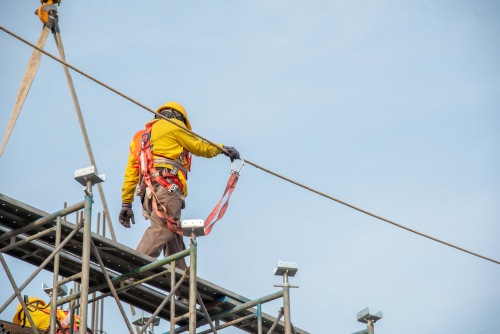Working at height comes with its own set of risks and challenges. From construction sites to maintenance tasks, employees often find themselves working on elevated platforms, ladders, or scaffolding. It is the responsibility of employers to prioritize the safety and well-being of their workers in such scenarios. In this article, we will outline the key responsibilities that employers must fulfill to ensure the safety of employees working at height.
What exactly classes at work at height?
Work at height covers any place (including at, above, and below ground level), where a person could potentially be injured if they fell from that place. This includes (but is not limited to) working on scaffolding, ladders, rooftops, and working near or adjacent to fragile materials.
5 Key Requirements for Employers:
- A risk assessment must be carried out for all work conducted at height.
- The work must be planned and organized.
- Appropriate equipment must be provided. The equipment must be regularly inspected and maintained.
- Workers must be trained and able for the task.
- Risks must be anticipated and controlled.
The safety of employees working at height is a paramount concern for employers. By fulfilling their key responsibilities, employers can create a safe working environment that minimizes the risk of accidents and promotes the well-being of their workers. Risk assessment, training, provision of appropriate equipment, supervision, communication, and emergency preparedness are all integral aspects of ensuring the safety of employees working at height. By prioritizing these responsibilities, employers demonstrate their commitment to the welfare of their workforce and uphold the highest standards of workplace safety.

